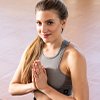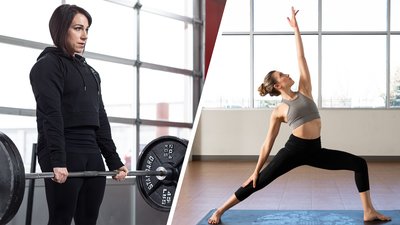Powerlifting is a unique strength sport in which competitors get three attempts at three specific lifts—bench press, squat, and deadlift—with the end goal of hitting a max weight on their third lifts. Since these are all major compound movements, they activate a lot of different muscles and require the body to work as a whole to perform them.
The glutes, quads, hamstrings, and hips are, of course, heavily involved in squats and deadlifts, just as the shoulders, pecs, traps, and lats are worked during the bench press. Needless to say, powerlifting can be extremely taxing on the body, and injuries are common.
This calls for yoga moves that will help increase mobility and flexibility in those areas. Better movement will improve blood flow, allowing the muscles to work at optimal levels and helping them get stronger over time. Tightness can hinder proper form, leading to poor movement patterns and potential injury. Plus, you just can't move as much weight as you'd like—and that's the whole point of the sport!
Here are five yoga poses to implement into your recovery routine for powerlifting:
1. Prasarita Padottanasana
Deadlifts and accessory movements for the deadlift can leave your hamstrings a little tender. This amazing wide-legged forward fold is the perfect way to stretch out the spine while at the same time working on improving hamstring flexibility.
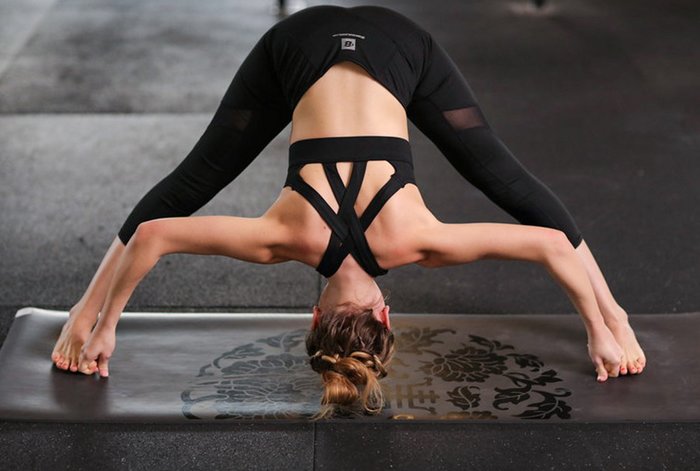
To spice it up a notch and get even more from this pose, interlace your fingers behind your back and let your arms fall over your head—but don't force it. Just let pure gravity work its magic and open up your shoulders. Keep up the steady breathing, extending the spine with every inhale and going deeper into your fold with every exhale.
2. Prasarita Padottanasana Twist
The base of this asana is the same as the first yoga pose, but with a completely different purpose. Here, you're working on stretching out your obliques and lower back muscles, increasing outer hip mobility—you'll be thanking yourself the next time you squat!
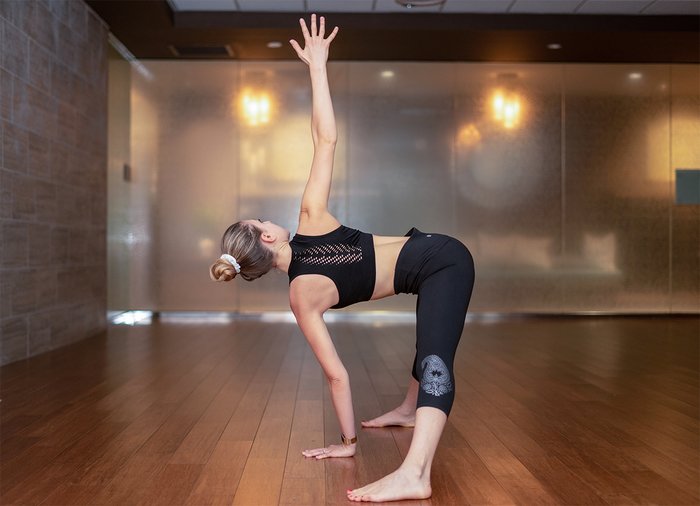
I cannot stress enough how important it is to pay attention to all the tendons and ligaments around your hips. Using the palm of your hand that's on the floor, actively push yourself away from the ground to create a lift. This protects your spine and helps you get the most out of the pose.
3. Malasana Squat
Most of us did this pose for the first time when we were toddlers. It's a natural position, but we all seem to forget to do it once we start walking. By implementing it into your routine, you not only stretch your tendons and open your hips, but also elongate your spine, improve the blood flow throughout your pelvic region, and even stretch your abs. Talk about an all-around relief agent for a wrecked bod!
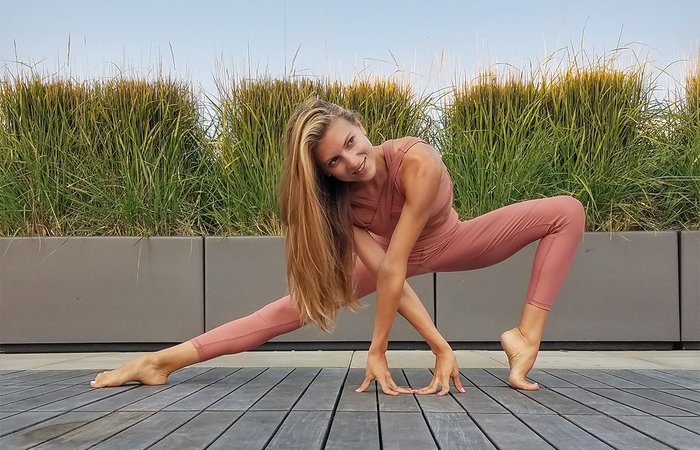
You can also stretch out one leg and work on opening the hips even more (see photo). You'll probably notice the difference in your hips when you do it this way, as most of us have one side that's more developed or mobile than the other.
4. Urdhva Dhanurasana (Wheel Pose)
Wheel pose offers all the benefits of a bridge or even camel but with the addition of an amazing shoulder opener. The shoulders and pecs do not always take kindly to the bench press, so it's super important to keep them moving properly and prevent tightness.
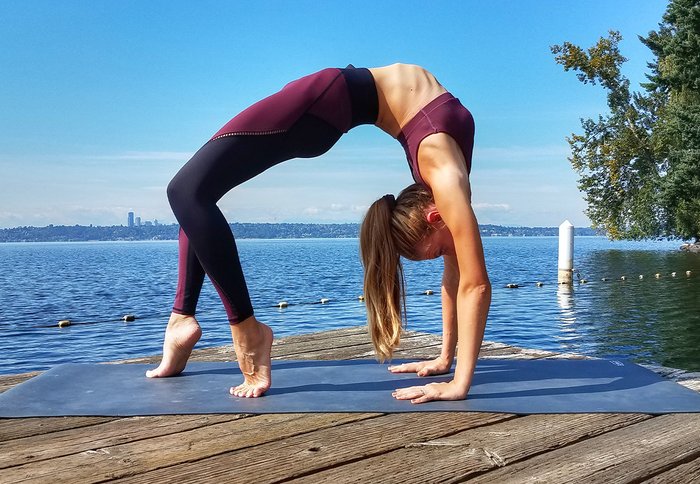
Make sure to include the wheel pose after your workout and not as a warm-up. You need to be pretty warm already to get the full effect of the pose and prevent any lower back pinching. Remember to continue pushing yourself away from the ground through every inhale. You don't want to compress your lower back, but rather create space in between your vertebrae.
It may seem that you're doing the complete opposite of a natural movement with this yoga pose, but when you actually look at how your spine is built, you see that there's a natural lumbar curve, and this move accentuates it. The opening should come from the front, and you should be working on pulling your shoulders away from your ears and pushing your head through.
5. Eka Pada Rajakapotasana (Pigeon Pose)
Pigeon pose, especially with the mermaid bind, is one of my absolute favorites because it includes everything—backbend, shoulder opening, balance, core strength, hip opener, and hip flexor stretch. If you are weak in any of those areas, improving them is going to help you become a stronger lifter.
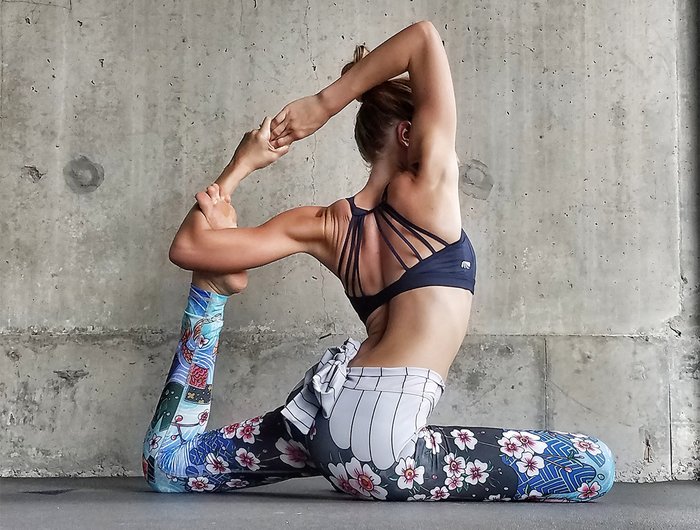
The hip flexors are a huge component of proper squat form, yet they can get really tight really fast with heavy loads or lots of squatting frequency over time. This limits your range of motion and can even be painful down the road. Stretching is the key to preventing further issues such as pinched nerves, tight quads and hamstrings, and lower back pain. Always keep breathing through the pose and use that breath to work into the areas that require more attention.
If you're looking to enhance your recovery from powerlifting programming with regular yoga and meditation, check out Mind Body Fit on Bodybuilding.com BodyFit Elite!
